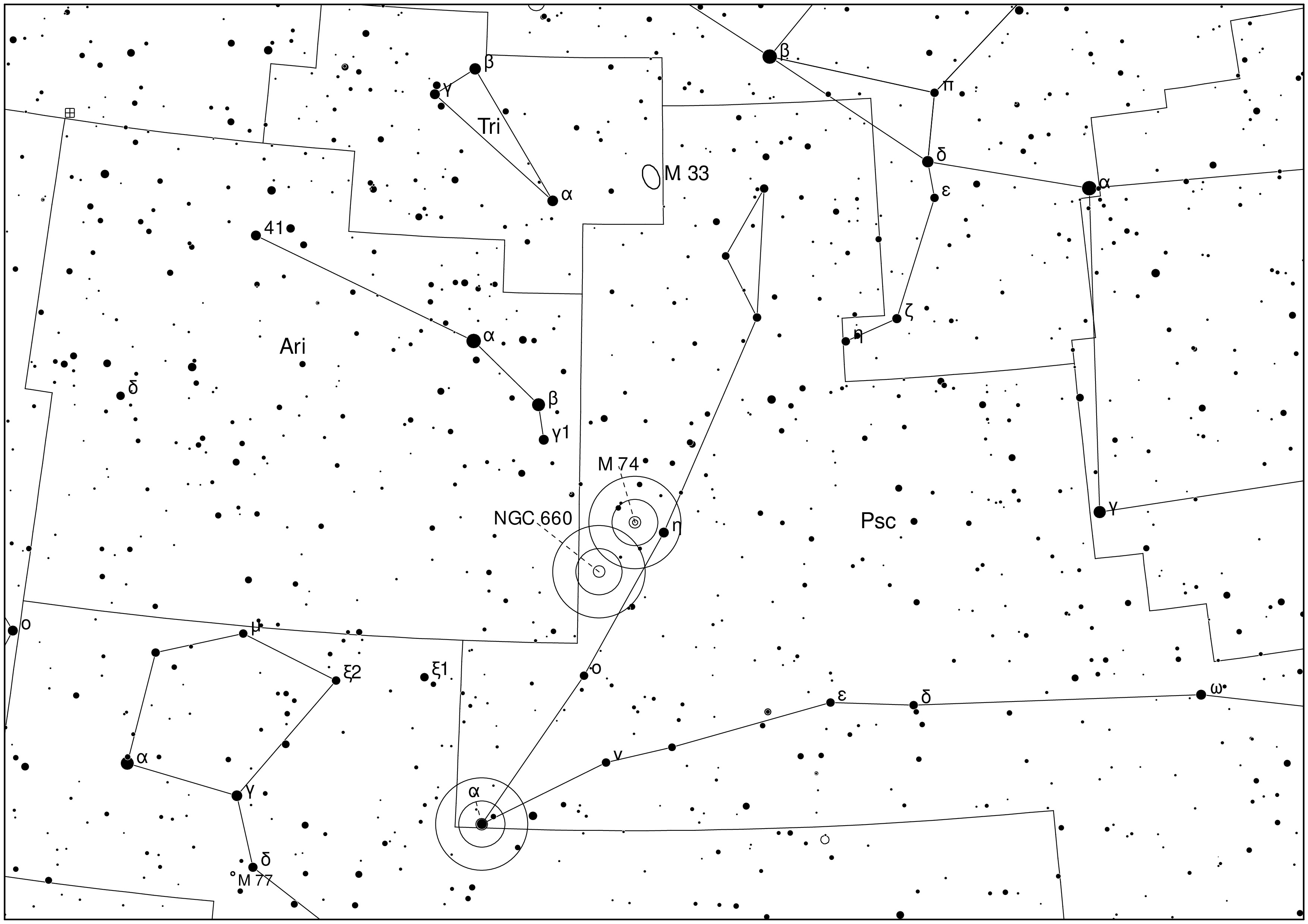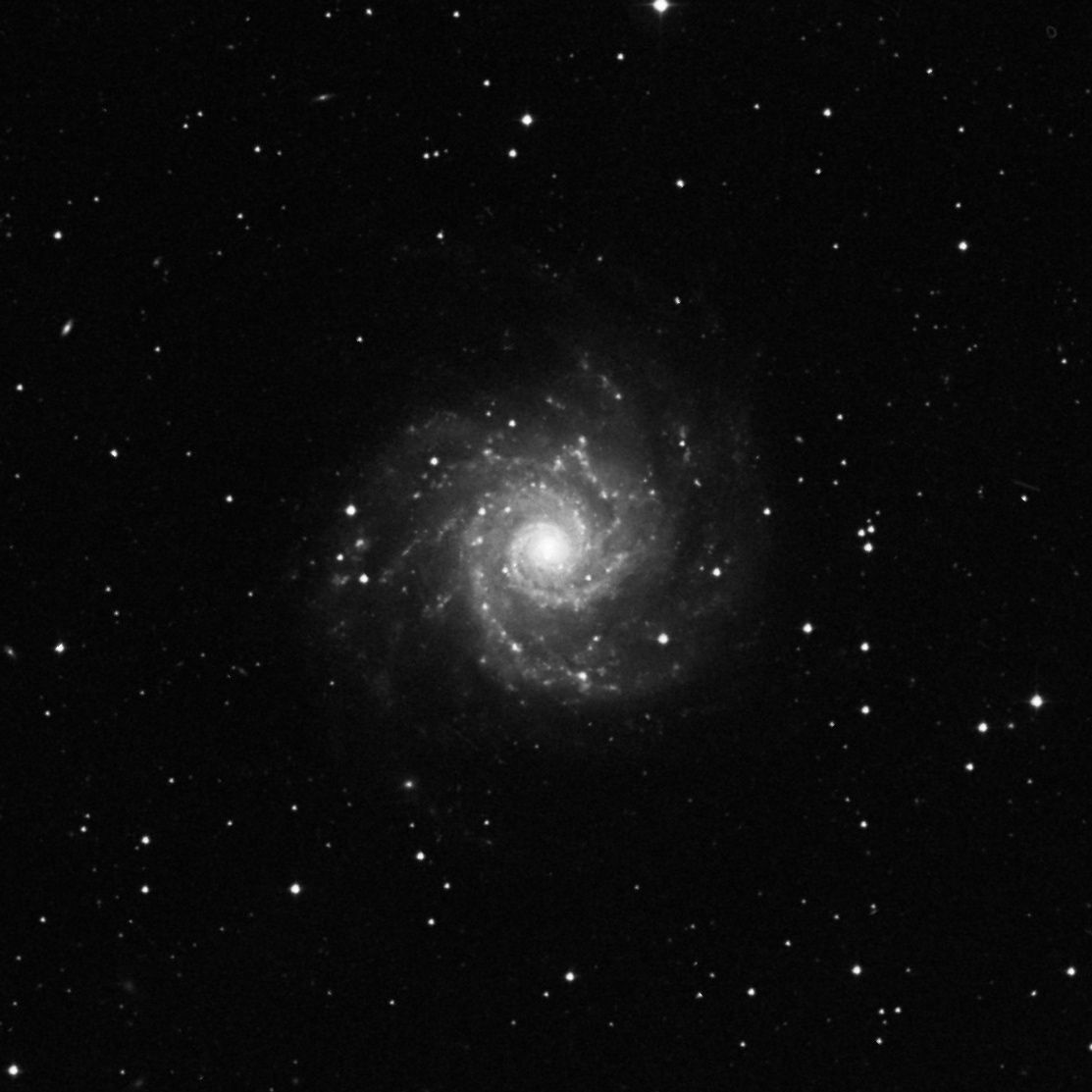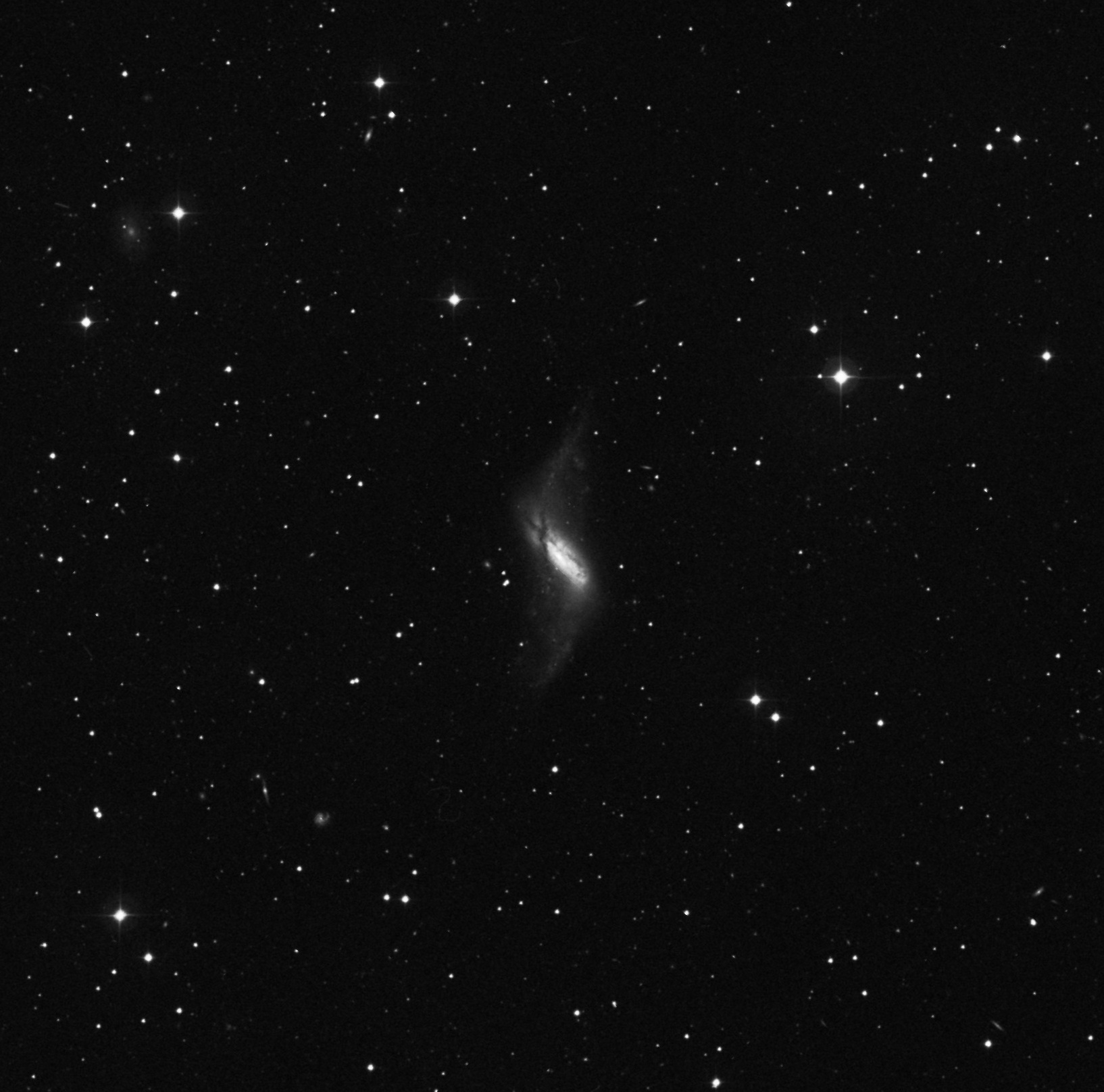Skyguide - Selected objects for every season
The Skyguide is primarily intended to give suggestions for your own observations and will briefly describe selected objects for each season of the year. Both easy and difficult objects will be selected. How difficult an object is depends of course on several factors, especially sky quality, telescope aperture and experience of the observer.
For each object the most important information is given in short form. These are supplemented by photos or sketches. Furthermore, a map, created with the free software Cartes du Ciel (Skychart), is available for a rough orientation. In general, I recommend, to create your own finder charts. The visual description of the object is based mainly on own observations and should serve only as a starting point.
Skyguide 2023-3 (Autumn)
In this tour we focus on the constellation Pisces, which belongs to the 12 signs of the zodiac and is known since ancient times. South of Andromeda and Pegasus it is a rather inconspicuous constellation. The brightest star Eta Piscium (Alpherg) reaches 3m.6. Currently the vernal equinox is in Pisces, where the Sun crosses the celestial equator. The constellation is far away from the plane of the Milky Way, but despite its size it offers only few bright and known objects. The only Messier object is the galaxy Messier 74, otherwise the numerous galaxies are rather faint and small. Besides a few exotic asterisms, other objects like clusters or nebulae can be found in vain. With a small telescope, however, the constellation offers some fine double stars.
Let's start with Alpha Piscium (Alrischa) in the south, a double star with an angular separation of almost 1.9 arcseconds. The magnitudes of the components are 4m.1 and 5m.2. Colorwise this double star may not convince, but brightness and separation promise an attractive view for telescopes from about 100 mm of aperture. A separation should be possible without any problems. In case of a refractor the following experiment is also a good idea: With aperture diaphragms in front of the objective, one can gradually reduce the free aperture. You can see well how the diffraction disks of the two components become steadily larger at sufficiently high magnification and seem to approach each other until they finally overlap. Depending on the conditions, one can also see the decreasing influence of air turbulence, which makes the image look more aesthetic. Therefore, sometimes it is not a bad idea to use a smaller telescope. For the urban observer, Alpha Piscium is a very rewarding object.
Now we come to Messier 74, a spiral galaxy near Eta Piscium and therefore easy to find. It was already discovered in 1780 by the French astronomer Pierre-François-André Méchain, who reported his observation to Charles Messier to include it in the Messier catalog. It is characterized by two spiral arms, which wind counterclockwise far around the bright center. Countless emission nebulae and star associations can be seen in photographs. Three supernovae have been observed in Messier 74 so far.
The apparent total brightness is about 9.5 mag with an angular diameter of just under 10 arcminutes. Thus Messier 74 has the lowest surface brightness of all objects in the Messier catalog after Messier 101. Under brightened skies the observation can be a challenge. Under dark skies, it can be seen as an extremely faint nebula even in 8x20 binoculars by an experienced and patient observer. In larger 16x70 binoculars it then becomes an easy target, where a rather large, nearly homogeneous nebula shows up.
It becomes interesting with telescopes of medium aperture and larger. René Merting describes the galaxy in his 12.5 inch Dobsonian under dark rural skies as follows: “at 36x the galaxy is visible as a large, faint nebula - at 72x a beautiful, large, diffuse galaxy with brightness increase towards the center, which presents itself almost stellar - M 74 is framed by three stars in the west and two in the east - at 160x the galaxy appears mottled, slight condensations and darker regions are visible, the edges appear frayed - at the western edge three stars in a row are visible, the core no longer appears stellar - at 206x the structures intensify”
So it is worth to observe Messier 74 with patient eyes to detect some details. A sketch or even just a draft can be helpful here.
The third and last object of this small tour shall be the fainter and smaller galaxy NGC 660 further south of Messier 74. It belongs to the rare group of polar ring galaxies, where two galaxies have been merged. Other known representatives of polar ring galaxies are NGC 4650A (Centaurus) and the highly interesting but very faint galaxy PGC 54559 (Hoags object, Serpens). NGC 660, with an apparent total brightness of 11m.2, should be readily accessible in 8 inch telescopes and larger, with the brighter region appearing oval. An asymmetry of the brightness distribution or a not quite central core indicates the two dust lanes, which are also directly observable in larger telescopes, as well as the faint tails to the north and south.


